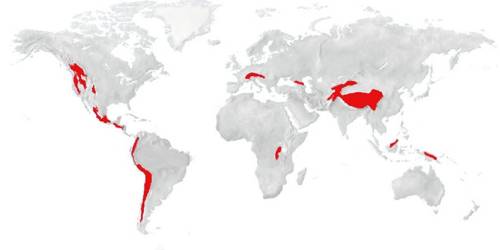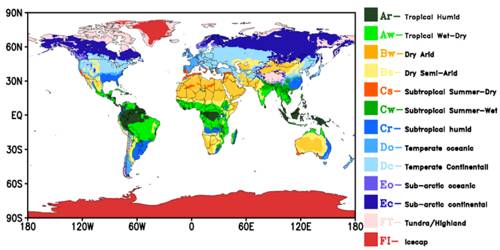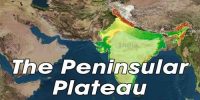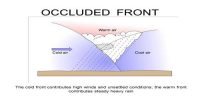Highland Climates according to Koeppen’s Classification
Highland climates are governed by topography. In high mountains, large changes in mean temperature occur over short distances. Precipitation types and intensity also vary spatially across high lands. There is vertical zonation of layering of climatic types with elevation in the mountain environment.
The determining factor is one of altitude (temperature decreases roughly 2º C for every increase of 305 m). This is a difficult climate zone. Highland regions generally correspond to the major categories transform in temperature with latitude – with one significant exception. Seasons only exist in highlands if they also exist in the nearby lowland regions.

This group was not a part of Köppen’s original or revised scheme but was later added to accommodate the changes in climate as one climbs a mountain. For example, while the climate at the base of a mountain may be the similar as the surrounding climate category, say, temperate, as you move up in elevation, the mountain may have cooler temperatures and more snow—even in summer.
















